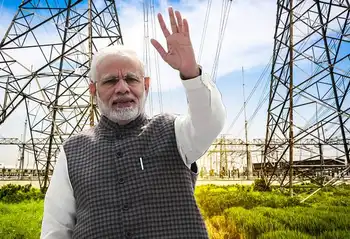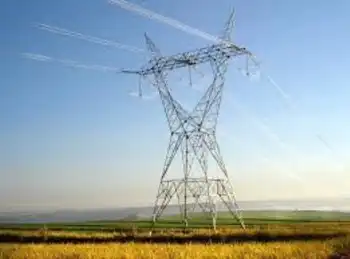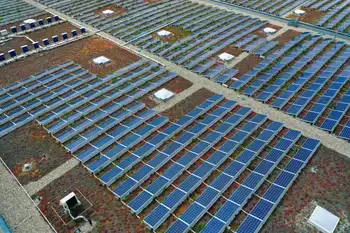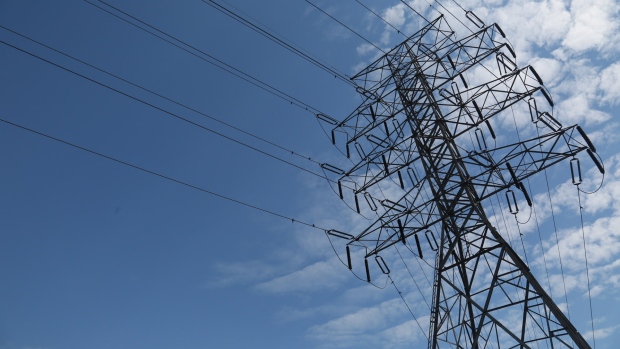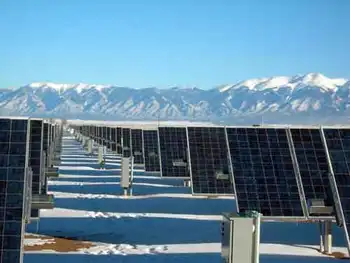‘Smart grid’ — power lines move into digital age
By Associated Press
CSA Z463 Electrical Maintenance
Our customized live online or in‑person group training can be delivered to your staff at your location.

- Live Online
- 6 hours Instructor-led
- Group Training Available
The "smart grid" has become the buzz of the electric power industry, at the White House and among members of Congress. President Barack Obama says it's essential to boost development of wind and solar power, get people to use less energy and to tackle climate change.
What smart grid visionaries see coming are home thermostats and appliances that adjust automatically depending on the cost of power; where a water heater may get juice from a neighbor's rooftop solar panel; and where on a scorching hot day a plug-in hybrid electric car charges one minute and the next sends electricity back to the grid to help head off a brownout.
It is where utilities get instant feedback on a transformer outage, shift easily among energy sources, integrating wind and solar energy with electricity from coal-burning power plants, and go into homes and businesses to automatically adjust power use based on prearranged agreements.
"It's the marriage of information technology and automation technology with the existing electricity network. This is the energy Internet," said Bob Gilligan, vice president for transmission at GE Energy, which is aggressively pursuing smart grid development. "There are going to be applications 10 years from now that you and I have no idea that we're going to want or need or think are essential to our lives."
Hundreds of technology companies and almost every major electric utility company see smart grid as the future. That interest got a boost with the availability of $4.5 billion in federal economic recovery money for smart grid technology.
But smart grid won't be cheap; cost estimates run as high as $75 billion. Who's going to pay the bill? Will consumers get the payback they are promised? Might "smart meters" be too intrusive? Could an end-to-end computerization of the grid increase the risk of cyberattacks?
Today's grid is seen by many as little different from one envisioned by Edison 127 years ago.
The hundreds of thousands of miles of power lines that crisscross the country have been compared to a river flowing down a hill: an inefficient one-way movement of electrons from power plant to consumer. There is little way to provide any feedback of information to the power company running the system or those buying the electricity.
"The heart of a smart grid is to make the grid more flexible, to more easily control the flow of electrons, and make it more efficient and reliable," said Greg Scheu, head of the power production division at ABB North America, a leading grid technology provider.
"The meter is only the beginning," said Alex Huang, director of a grid technology center at North Carolina State University. He said that instead of power flowing from a small number of power plants, the smart grid can usher in a system of distributed energy so electricity "will flow from homes and businesses into the grid, neighborhoods will use local power and not just power flowing from a single source."
There are glimpses of what the future grid might look like.
On the University of Colorado campus in Boulder, the chancellor's home has been turned into a smart grid showhouse as part of a citywide $100 million demonstration project spearheaded by Xcel Energy. The home has a laptop-controlled electricity management system that integrates a rooftop solar panel with grid-supplied power and tracks energy use as well as equipment to charge a plug-in hybrid electric car.
Florida Power & Light is planning to provide smart meters covering 1 million homes and businesses in the Miami area over the next two years in a $200 million project. Smart meters are being distributed by utilities from California to Delaware's Delmarva Peninsula.
"We've got about 70 (smart grid) pilots all over the country right now," said Mike Oldak, an expert on smart grid at the Edison Electric Institute, which represents investor-owned power companies.
Center Point Energy, which serves 2.2 million customers in the metropolitan Houston area, expects to spend $1 billion over the next five years on smart grid. Residential customers are seeing an additional $3.24 a month on their electric bills, but Center Point says that should be more than offset by energy savings.
An Energy Department study projects energy savings of 5 percent to 15 percent from smart grid.
"This pays for itself through efficiency and demand reduction and if you don't look at it from that perspective you won't get your money back," said Thomas Standish, group president for regulated operations at Center Power Energy.
The cost and payback have some state regulators worried.
"We need to demonstrate to folks that there's a benefit here before we ask them to pay for this stuff," says Frederick Butler, chairman of New Jersey's utility commission and president of NARUC, the national group that represents these state agencies.
Energy Secretary Steven Chu, said the current grid stands in the way of increasing the use of renewable energy sources such as wind and solar that "will need a system that can dispatch power here, there and everywhere on a very quick basis."
But Chu and others also worry about security. "If you want to create mischief one very good way to create a great deal of mischief is to actually bring down a smart grid system. This system has to be incredibly secure."
And there is the issue of intrusion.
"Is the average consumer willing to pay the upfront costs of a new system and then respond appropriately to price signals? Or will people view a utility's ability to reach inside a home to turn down a thermostat as Orwellian?" Sen. Lisa Murkowski, R-Alaska, said at a recent hearing on smart grid.





